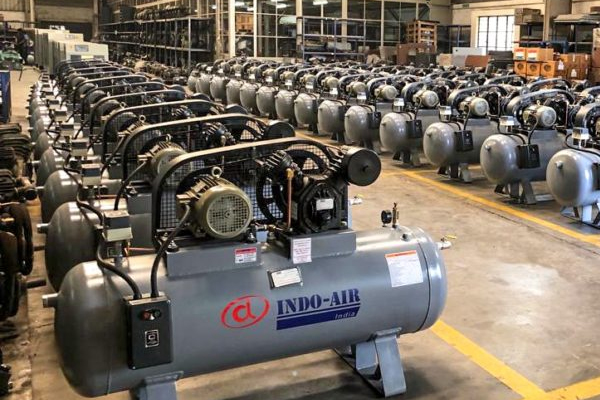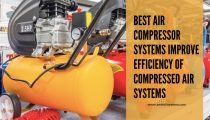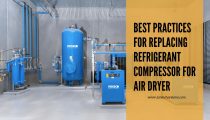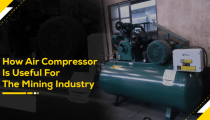Compressed air, frequently referred to as the ‘fourth utility’ in…

Importance of Proper Compressed Air Distribution
Uncontrolled losses draining away a whopping 20 percent of your profits and you are still wondering how to plug them. Have you considered leakages in the compressed air system leading to the mounting loss every year? If you have not given it a thought yet, it is time to understand that a proper compressed air distribution system ramps up profitability.
Save Energy Bill
The installation of air compressors has to be proper to deliver key benefits. If you are grappling with inflated energy bills, you need to examine whether the installation of compressed air distribution has been efficient. If productivity ranks low, make sure the installation of air compressors leaves no scope for inefficiency. Poor air tool performance is another indicator that the installation has not been satisfactory.
Leakage Control
Piping systems functional for more than five years have shown significant leakages of up to 25 percent. Despite these evident losses, many facilities remain unwilling to upgrade equipment to the latest technology. Besides, undersized or oversized piping, poorly configured systems or clogged filters can also lead to inefficiencies.
Efficient compressed air distribution network includes a low-pressure drops between the compressor and the point of consumption. There is an efficient condensate separation if a compressed air dryer is not installed. Also, the leakage from the distribution piping is at the minimum level.
High Rebuilding Cost
It is important to bear in mind that the cost of rebuilding an entire distribution network is huge. Therefore, it is wiser to ensure the initial installation is correct. Use a lightweight, modular piping system that can be reconfigured if the compressed air system changes over time. Polymer based piping technology like PPCH eliminates corrosion found in galvanized steel systems and the smooth inner bore allows air to pass through the pipe with less resistance and reduces pressure drops thereby directly saving power costs. These pipeline systems are flame retardant, leak-proof, insulated to avoid external temperature affect and UV coated i.e. suitable for exterior installation also. Besides, it takes one-third of the time required to install rather than a traditional system.
Dimensioning Reduces Pressure Drops
Fixed compressed air distribution networks should be dimensioned so that the pressure drops in the pipes does not exceed 0.1 bar between the compressor and the most remote point of consumption. The largest pressure drops frequently occur at connections of flexible hoses, hose couplings and other fittings throughout the compressed air distribution network. These areas should be carefully examined and properly dimensioned as well.
Uniform Compressed Air Supply
The most efficient piping system involves a closed-loop ring line around an area in which air consumption will take place. Branch pipes are run from the loop to the various consumption points. This provides uniform compressed air supply despite heavy intermittent usage. The air is led to the actual point of consumption from two directions.
Condensate Drains Cut Operational Cost
Condensate drains are often ignored as a component of a compressed air system. Contaminants can enter a system at the compressor intake or be introduced into the air-stream by the system itself. Drains have to operate properly for the filters and separators to be successful in completing their tasks. Slugs of water due to drain failure can cause major problems in a desiccant dryer. Hence, the drain choice significantly lowers operating costs for years. It is important to have system efficiency and reliability by avoiding wasted energy.
Lowest Total Ownership Cost
Choose technology from a reliable manufacturer to ensure continuity and hassle-free service. Air compressors are long term investments that carry a significant impact on your business for years. The average factory changes air compressors every decade. In general the total air compressor’s lifecycle cost gets split into 15% investment, 10% maintenance and 75% as energy cost.
Flexible for Future Expansion
Opt for one with combined expertise in the compressed air business. Those who know what it takes to design, install, and maintain air compressors. Seek one capable of designing a complete compressed air system, supplying the necessary equipment and conducting the complete installation. A compressed air system that meets the needs today should be flexible enough to allow for future expansions. With multiple types of air compressor technologies and an experienced team to handle any type of compressed air installation, select the proper equipment design and layout to meet the needs.
Small yet effective steps taken to ensure an efficient installation of a compressed air system can make a big difference in the business operations and shore up profits. Think of saving on energy costs for a decade due to minimum leakage. Making the right choice of compressed air system provider decides where your business aims to reach in the coming years.




